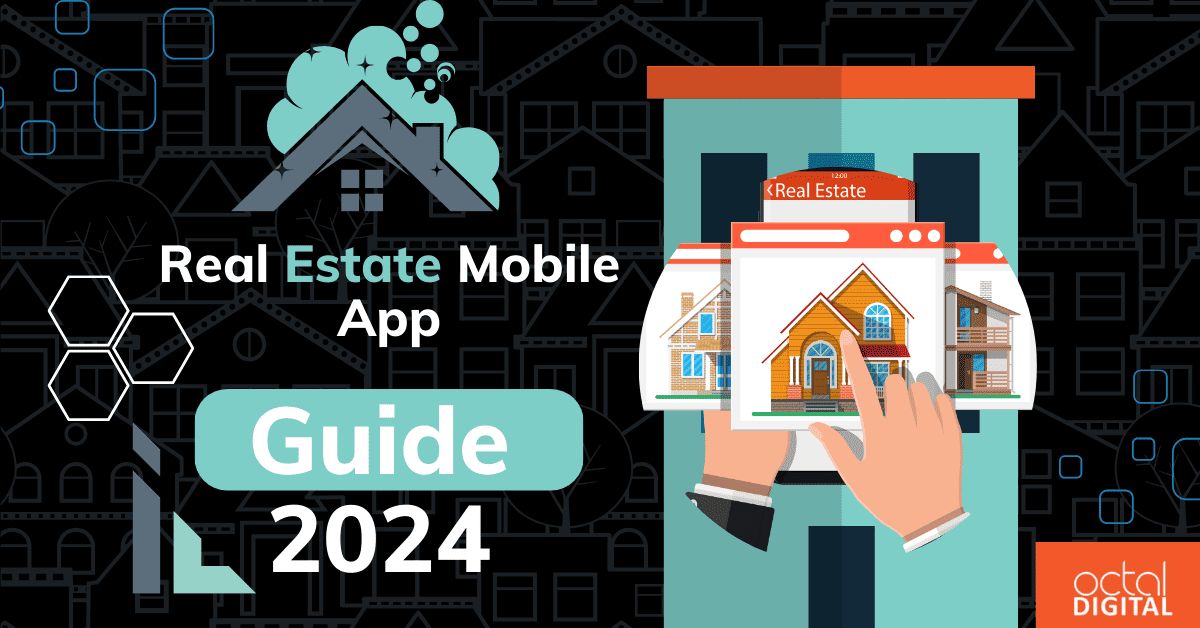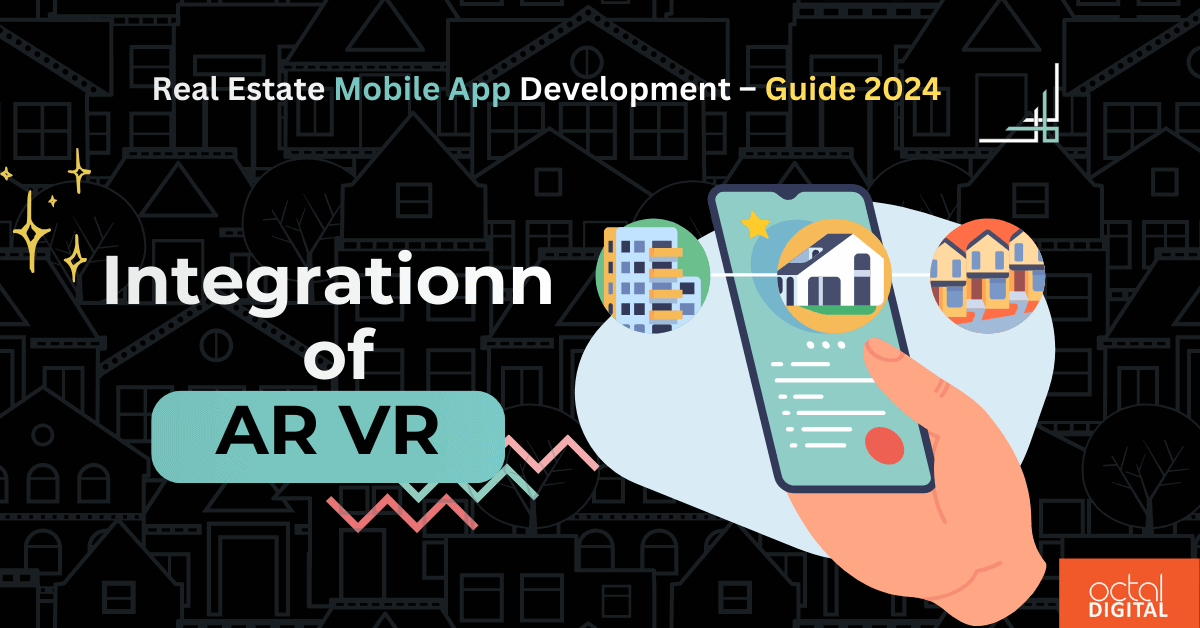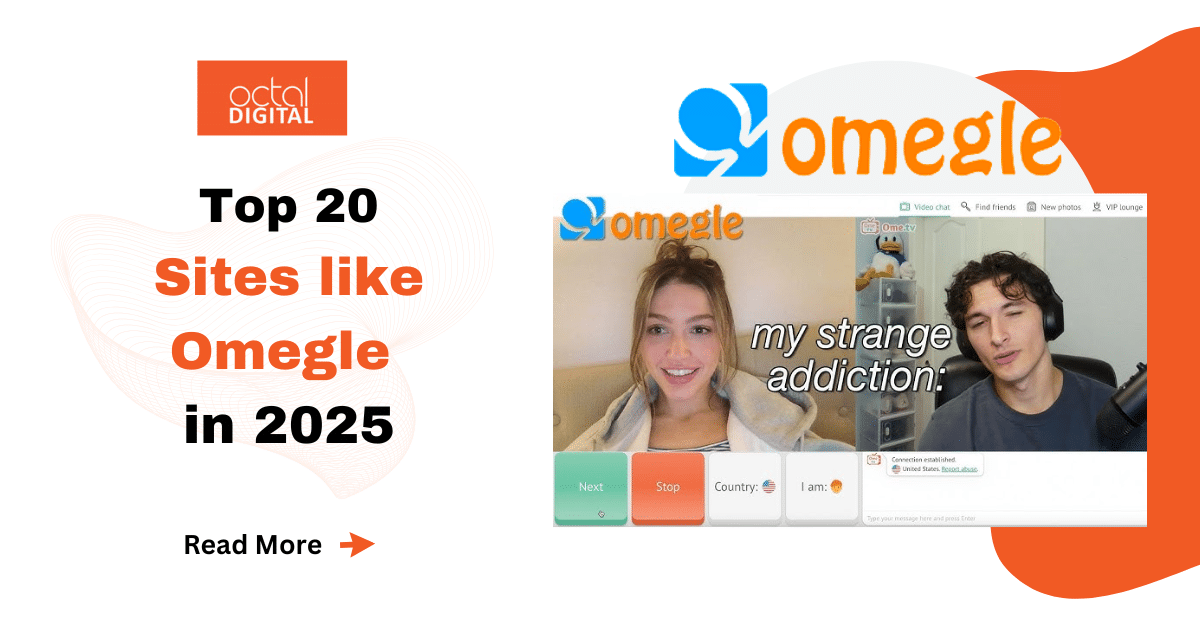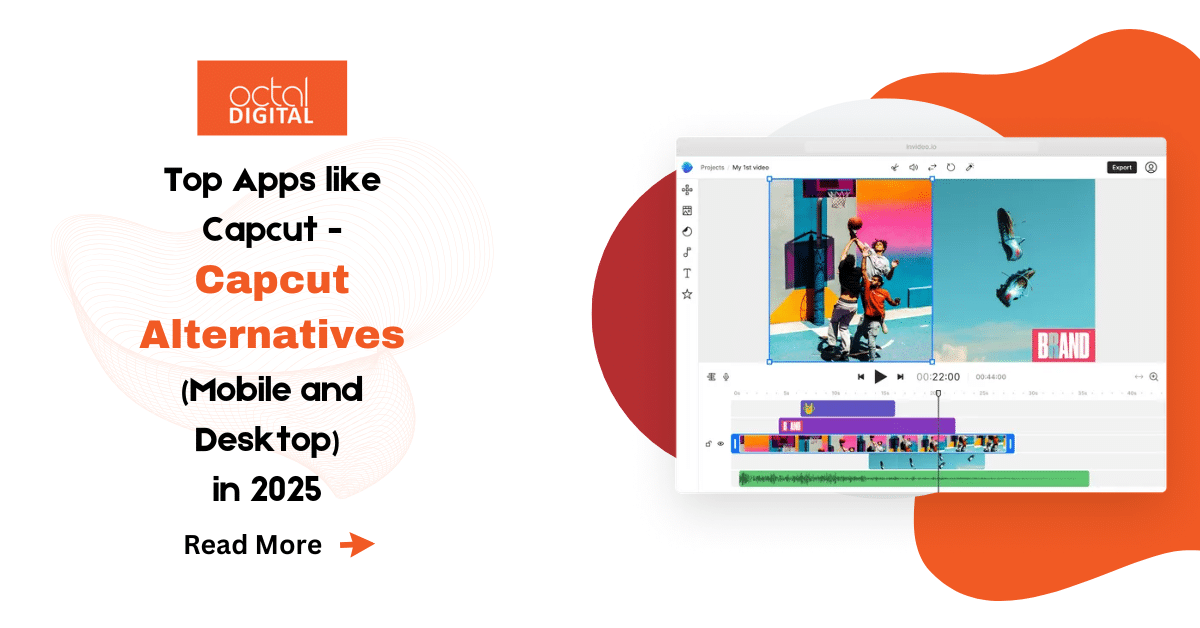In the current generation, mobile applications have played an essential role, especially in real estate. Given that the number of people using their Smartphones for one need or the other continues to rise, the real estate market has shifted to contain this need. The use of real estate mobile apps is now mandatory for consumers to use, for any investor planning to buy or sell a property as well as real estate professionals. When it comes to real estate mobile app development, two key factors take center stage: cost and features provide another way of segmenting the equipment market. It is with the help of these factors that one can understand whether an app is successful or not in the achievement of its purpose of serving the users.
This may include cost, technology choice, project scope, timeline, and resources among others; both developers and stakeholders must take a keen interest in these aspects to meet the market needs more efficiently.
The goal of this blog post is simple – to help. Real estate mobile app development can involve different stakeholders both the developer and any other investor, and the decision-making process ought to be well-informed. We will filter out the fluff and give you a comprehensive guide on what exactly can affect the costs of Real Estate Mobile app development while focusing on key features that determine the success of the app.
Table of Contents
ToggleKey Features in Real Estate Mobile App Development
Without much further ado, we shall present to you the necessary components of a real estate mobile application.
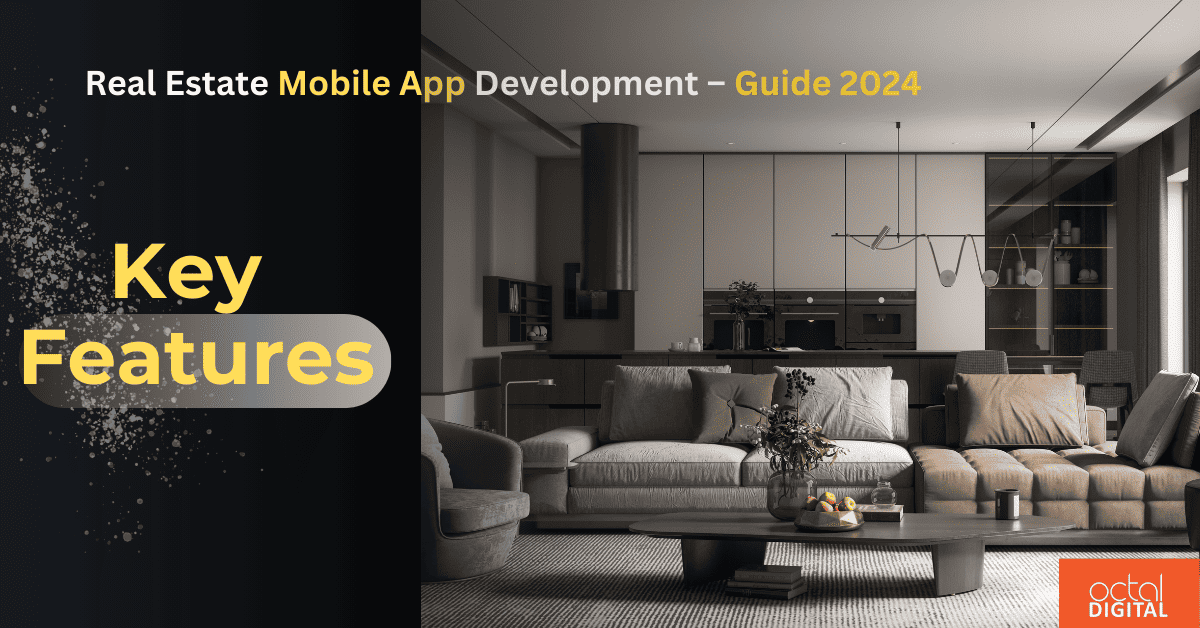
A. User Authentication and Onboarding
Implementing Secure Login Methods:
- Provide the account with highly secure features such as two-factor authentication (2FA) or biometric recognition that shall protect it against cyber thieves.
- Introduce and enhance encryption protocols and secure methods of communication for the better protection and privacy of users’ data.
Streamlining Onboarding Processes for a Seamless User Experience:
- Optimize onboarding by creating a process that is engaging and as concise as possible since it tends to take many forms.
- Improving the collection of user data to ensure that the collection of information is appropriate and sufficient yet minimizes the amount of friction during the onboarding process.
B. Property Listings
Advanced Search and Filtering Options:
- Create a good search engine where users can refine the results by using various filters such as location, rental price, amenities, and property type.
- Improve the overall utility of the site through fast property listings search, which in turn enables the users to get their desired results more quickly.
Enhancing Listings with High-Quality Images and Detailed Information:
- Providing clearer and more detailed images as well as ensuring that all pictures are of great quality, hence enhancing the discovery of the properties.
- Facilitate the decision process by offering information regarding a property and its characteristics, surrounding area, and any bonus points that will set the property apart.
C. Virtual Tours and 3D Views
Integration of Virtual Reality (VR) and Augmented Reality (AR):
- Interact the users with property search by making use of VR and AR technologies as features within the created app.
- Some significant aspects to consider include; providing an enriched visual experience to help clients get a feel of your building during virtual tours including; navigation, realistic rendering, and having some form of interactivity to engage the clients.
Elevating User Experience through Immersive Property Views:
- Usability and graphics should also be improved by focusing on an appropriate control system for mobile real estate applications that augments the experience of using virtual tours.
- Offer a realistic tour of homes through 3D tours, which lets potential buyers preview homes as if they toured the property for sale, personally.
Read More: UI/UX Principles: Best Guide for 2024
D. Geolocation and Mapping
GPS Integration for Accurate Property Mapping:
- By incorporating GPS technology to point at the accurate location of properties, the user can access real estate mobile applications with accurate information from maps.
- Improve the user experience of the property environment by adding more mapping functions that display various points and facilities around the property.
Leveraging Location-Based Services for Personalized Property Recommendations:
- Create a system of property recommendations driven by the users’ geographical location and their possible preferences as to the type of property.
- Use more of machine learning techniques to enhance the accuracy of sorting the results to fit personal tastes and preferences in the long run.
E. Communication Features
In-App Messaging and Chat Functionality:
- Offer convenient and easily accessible in-app user and seller messaging and chat for effective and seamless communication.
- Improve its user-interaction efficiency to achieve real-time conversational goals that allow users to ask questions make negotiations, and receive immediate replies.
Utilizing Push Notifications for Timely Property Updates and Alerts:
- Alert users using timely push notifications to provide them with up-to-date information on new listings, changes in prices, and relevant properties.
- Enhance user engagement to enjoy increased retention of users on the app by creating interesting and informative notifications.
F. Financial Tools
Integration of Mortgage Calculators and Financial Planning Features:
- Equip users with comprehensive financial tools to calculate a mortgage payment, check how much home they can afford, and build a financial plan.
- Also, expand the range of services and tools so that users could gain a better understanding of how property prices and personal financial strategies correlate to one another, which makes for improvement of the general usage experience.
Seamless Transactions through Payment Gateway Integration:
- Integrate safe and efficient payment solutions and make property acquisition smooth and secure.
- This can be done by making sure that the methods used to receive payments are secure both electronically and to the users of the service or product.
Read our latest Blog: Healthcare App Development: Innovating Patient Care 2024
G. Analytics and Reporting
Implementing User Behavior Analytics for Insights:
- Afford better monitoring and evaluation of users’ behaviors and interests based on enhanced analysis tools.
- Monitor users’ interactions, using frequency, intensity, and frequency of specific aspects within the app to predict areas to optimize.
Robust Reporting Tools for Developers and Administrators:
- Assure developers and administrators to have full and detailed reporting solutions to monitor on time the figures and indexes of the real estate mobile app performance.
- Closely track user activity and other pertinent concerns and troubleshoot potential problems for improved system performance.
We at Octal, follow some philosophies which believe in the cut corners approach and think that every step in the developmental process should be the best. We hold to the implementation of industry best practices that will show the world that, apart from meeting internal security, real estate mobile apps are scalable and performance-oriented. Privacy is an essential issue, so we have put measures in place to ensure that particular users’ information is protected through the use of secure measures and encryption. All the developed solutions are designed with an element of future flexibility enabling them to cater to ever-expanding markets.
Cost Factors in Real Estate Mobile App Development
The price for creating a real estate mobile app can vary, depending on some features as the number of features, the degree of development’s complexity, the choice of a platform – iOS, Android, or both, and the location of developers. The initial development of a simple real estate app usually costs about $20,000, while a complex real estate app with more functions could cost at least $100,000 or more.
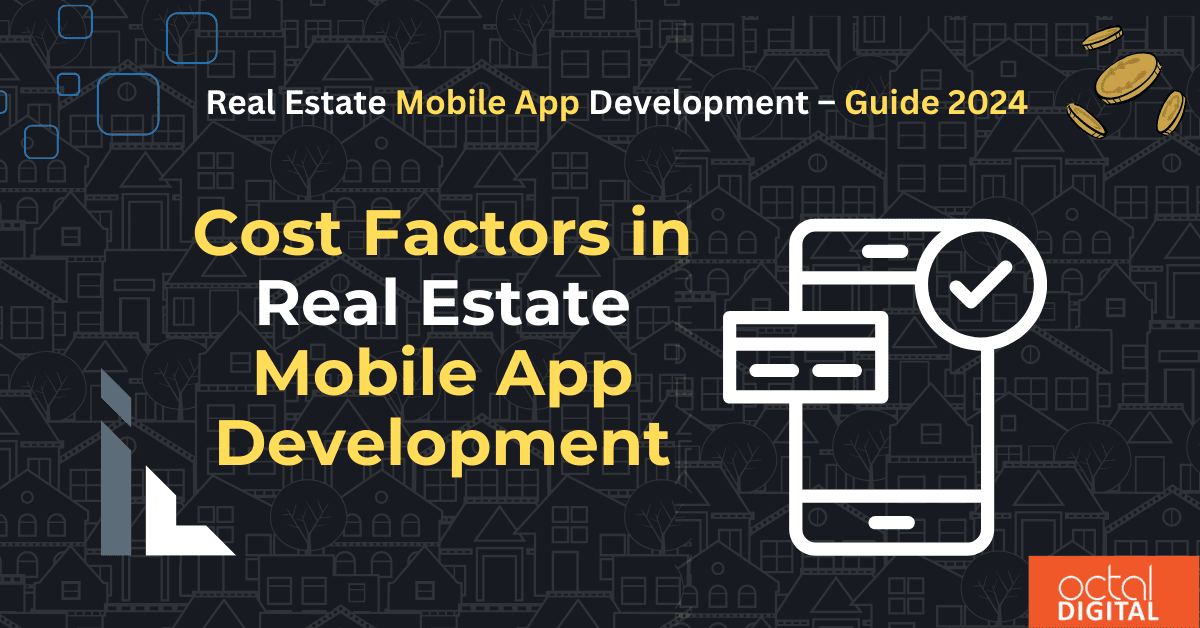
A. Preliminary Planning and Analysis
Importance of Comprehensive Market Research:
- Carry out an elaborate market analysis to establish market segments to target, competitors, and existing market trends.
- Develop a clear understanding of the strengths, weaknesses, opportunities, and threats of the chosen features based on user preferences, pain points, and behaviors.
- It is also important to organize surveys or feedback sessions to get a sense of the input of potential uses.
Defining Clear Objectives and Features for the App:
- State in detail the objectives of creating a real estate mobile app; whether to enable people to look for properties online, take virtual tours, or transact.
- It is important to prioritize all the features available or need to be developed according to the requirements of users and market trends so that the app will not carry the features that are not at all useful.
- Closely construct a detailed project plan that lays down the key steps and phases of the project including the features that are to be developed and timeline.
B. Development Costs
Hiring Developers and Technical Professionals:
- Consider the expertise and experience required for real estate app development, including backend, frontend, and mobile developers.
- Evaluate the option of hiring freelance developers, in-house teams, or outsourcing based on budget constraints and project scope.
- Factor in the cost of employee benefits, training, and any potential recruitment fees.
Selection of Appropriate Technology Stack:
- Choose a technology stack that aligns with your real estate mobile app’s scalability and performance requirements.
- Assess the licensing costs of frameworks, libraries, and tools.
- Consider the long-term maintenance and update costs associated with the selected technology stack.
Infrastructure and Hosting Considerations:
- When calculating the costs of the server, one can reckon it according to the estimated frequency of visitors or/and the volume of data that should be stored.
- Start with the definition and the basic types of cloud hosting and the corresponding costs.
- Ensure that servers are ready for expansion if there is any expected growth in usage by users.
C. Design and User Interface Costs
Focus on UI/UX Design Principles:
- Work towards making the design process as much centered on the user as possible to facilitate a great experience.
- Usability testing should follow to collect feedback concerning the functions of the website and areas of concern.
- Hire a UI/UX designer who can work together to design the wireframes and the look and feel of the prototype.
Costs Associated with Graphics, Animations, and Branding:
- Invest in smooth graphics, animations, and brand identity designs as a part of the app’s design language.
- It is relevant to assess the potential expenses for licensing premium graphics and animations or developing custom ones.
- Make particular efforts to maintain the overall brand identity of the app throughout the App for well-coordinated usage.
D. Testing and Quality Assurance
The Crucial Role of Rigorous Testing:
- Committed time and resources for several testing phases that should be performed with your real estate mobile app such as the unit test, integration test, and user acceptance test.
- Perform testing strategies such as test-driven development (TDD) to identify problems before they compound into costly problems.
- One common feature is the possibility of conducting a beta test with a certain number of users to obtain comments before the official release.
Tools and Resources for Effective Quality Assurance:
- Implement tools for automation testing that will cut on efforts that are taken in testing a product manually.
- To ensure QA personnel is also optimized for the task, there is a need to train the individuals on testing methodologies and the available testing tools.
- Encourage developers and testers to report issues to each other for their resolution; this saves time.
Take a look at the case studies that we contributed to and see for yourself how we bring concepts to life through dynamic web solutions. However, at Octal Digital, our portfolio or record is not just proof of our accomplishments but also a sneak peek into what we can create for your future endeavors.
E. Post-Launch Maintenance for Real Estate Mobile App
Necessity of Regular Updates and Feature Enhancements:
- Incorporate a schedule for updates that are aimed at providing the users with new options, bug fixes, and heightened security.
- Users’ feedback and the application’s performance should be continuously followed to discover potential improvements.
- Identify predefined budget requests for everyday constant improvements, such as server and database maintenance, security checks, etc.
Budgeting for Ongoing Support and Bug Fixing:
- Establish a support team to address user inquiries and issues promptly.
- To help users, you may consider including support options within the application, or even chat or a help center inside the application.
- Provide allowance for bug fixes and have standby capacity to deal with issues that are likely to emerge after the software has been released to the market.
Such factors with a clear development plan, the choice of technologies, and the emphasis on ease of use can be considered as factors for the appearance of low costs of creating a real estate application. Making evaluations about the costs early and frequently leads to better control over the costs and development of a successful app.
At Octal Digital, our focus remains the same – letting our creativity guide our strategies with the pursuit of integrating new trends using the latest industry advancements to enhance your real estate mobile app’s strengths. In the case of Augmented Reality (AR), now in the spotlight, virtual property tours could be described as immersive and fascinating. This makes blockchain technology to be integrated into enhancing all property sales and purchases to be safe, efficient, and reliable. Furthermore, hyperlocal integration takes precedence over everything else by focusing on the local capabilities and options available in a particular area to equip the users with the proper knowledge for thoughtful choices. Such approach is rather proactive – it not only aims at providing the best present-day application experience to the audience but also adapts to changing needs and requirements frame in the sphere of real estate mobile app development.
Conclusion
Therefore, the strong interconnection between technology and value features, as well as an accurate estimation of costs, serves as the basis for creating real estate mobile applications. The following enumerated features: user authentication to ensure its members’ safety, augmented reality and virtual reality to enhance customer engagement, and communication tools to ensure interaction with the client make up the app. At the same time, the consideration of cost factors also on the plan and development level, during design, testing, as well as in ongoing operational and maintenance phases offers invaluable information for both the development team and the shareholders.
To optimize upon the given sociotechnical considerations further regarding a mobile app concerning real estate, it is crucial to identify these thoughts to maintain a mobile app in the possession of buyers, sellers, and real estate agents to be dynamic and of paramount importance. Therefore, a definition of a successful real estate mobile app should not only be in terms of codes and designs but as the ability to meet the user’s needs as well as the ability to meet set development goals cost-effectively.
FAQs
-
What are the key security measures implemented for user authentication in the real estate mobile app?
Knowledge of various measures like two-factor authentication and biometrics are key to the security of the information entered by the user hence enhancing faith in the application amongst the users.
-
How does the real estate mobile app utilize advanced search and filtering options to enhance the property search experience?
Satisfactory and relevant information about the app and its intended use can be obtained by experimenting with the search option, offering general guidance on how users can use the search function to narrow down the properties of their desired characteristics, thus advancing the usability factor of the app.
-
What immersive features, such as virtual reality (VR) and augmented reality (AR), are integrated to enhance property exploration?
A positive understanding of VR and AR integration assists in understanding the degree of immersion that can be provided during the property tours and thereby affects the level of interest and purchasing decisions of customers.
-
How is user behavior analyzed for real estate mobile app, and what reporting tools are available to developers and administrators for continuous improvement?
From a technical perspective, understanding the analytics and reporting aspects of the app provides insight into how developers can gather information about user engagements and the performance of the app, therefore the various forms of enhancements, and optimizations in the process. Utilize features analytics and gather information on which of them receives more clicks than others, and how this method can be applied to introduce the same concept and design to other aspects of the real estate mobile app.
